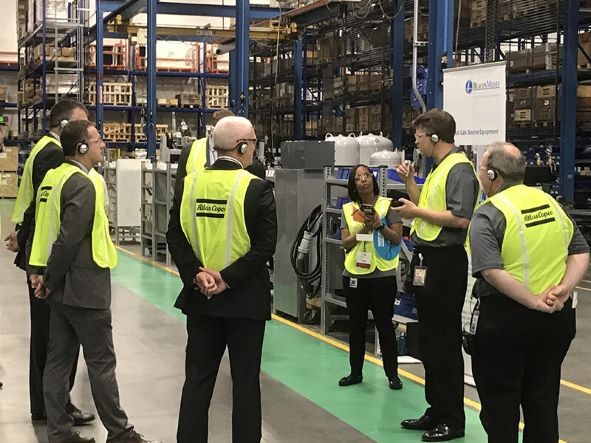Client Overview
A $175M Manufacturer in Northeast Illinois
The Challenge
This manufacturer was grappling with persistent recruiting and retention challenges. Their production workforce was composed of about 70% long-term contingent associates—some with over three years of tenure—and 30% who represented a constant churn. Many in this latter group were no-call, no-show “ghosts.” The client couldn’t understand why the majority of their contingent associates showed up reliably while the rest remained unstable and unpredictable.
Client’s Initial Response
In an effort to boost culture and engagement, the client worked with their staffing agencies to implement various incentives, including Employee of the Month programs, PTO policies, and other fringe benefits. Despite these efforts, the instability within the 30% group persisted.
Our Assessment
Total Talent Resources deployed consultants for a two-month on-site review to assess the situation. Collaborating closely with the client’s staffing partners, we conducted comprehensive interviews across all departments and levels of the contingent workforce. The objective was to uncover the underlying, unspoken reasons for high turnover through a neutral third-party lens, analyze the data, and recommend actionable solutions.
Implementation Strategy
-
Management Interviews
We began by interviewing managers at all levels who had contact with contingent staff. We sought to identify perceived causes of turnover and open requisitions from a leadership perspective. -
Staffing Agency Input
With permission from the client’s staffing agencies, we engaged all on-site agency managers across all shifts. We explored how they marketed the positions locally and gathered feedback on their experience working at the client site. -
Contingent Associate Interviews
Using agency rosters, we selected a representative sample of contingent associates by tenure—ranging from one week to over two years—and by department and shift. Their responses were compiled and analyzed alongside those from management and agency personnel. -
Data Integration
We compared insights from all three groups to identify perception gaps and determine where misalignment was contributing to attrition and poor recruiting outcomes.
Findings and Analysis
The analysis revealed major disconnects between management, staffing agencies, and contingent associates:
-
Perception Gap: Programs intended to improve morale, such as the Employee of the Month, were perceived as fostering favoritism. Workers believed cliques were responsible for selecting repeat winners, which undermined trust and engagement.
-
Training Deficiency: Second and third shift supervisors were stretched thin—responsible for production, training, and supervision with no formal training framework. Many new hires were placed on complex machinery with minimal instruction, leading to confusion and early exits.
-
Attrition Timing: While management believed most attrition occurred around the 30-day mark, our findings showed that 75% of new hires were leaving within the first 15 days, with 50% departing within just five days. This revealed far greater instability than initially understood.
Key Issues Identified
-
Low Pay Rates: The most frequently cited reason for turnover. However, due to tight customer contracts, increasing base wages was not feasible without jeopardizing margins.
-
Lack of Formal Training: While management believed training programs existed, they were outdated (over 17 years old), underutilized, and lacked oversight.
-
Safety Communication Failures: Many associates were unaware of basic safety procedures, reporting protocols, or what to do in the event of an incident.
Solutions and Results
-
Retention Bonus Program
To avoid increasing base wages, we helped the client implement a bonus structure tied to total hours worked. This incentivized employees to remain on-site past the 15-day threshold, after which they were 60% more likely to stay at least three months. The program improved both recruiting appeal and retention rates. -
Formalized Training Program
Working with supervisors, we revamped the training approach for machine operators. We introduced step-by-step instructions for each machine, rewrote SOPs (which hadn’t been updated in 17 years), and developed a 10-day training plan outlining daily learning objectives. Supervisors—especially those on second and third shifts—welcomed the clarity and structure, which in turn boosted associate engagement and retention. -
Enhanced Safety Communication
We introduced safety monitors in break areas to share regular announcements and best practices. Staffing agencies also committed to quarterly safety audits with the client’s management team to identify and address blind spots. The renewed focus on safety helped reduce risk and improved associate trust and morale.
Conclusion
By addressing gaps in perception, training, compensation strategy, and safety communication, Total Talent Resources helped this manufacturer significantly reduce turnover, improve engagement, and create a more stable contingent workforce. Our integrated, data-driven approach fostered alignment across management, staffing partners, and associates—transforming a high-churn environment into a more reliable and productive operation.
